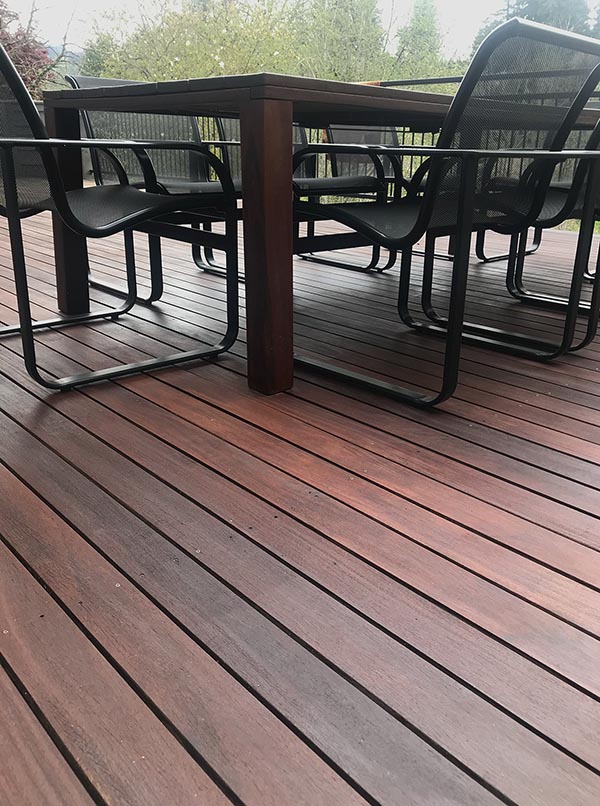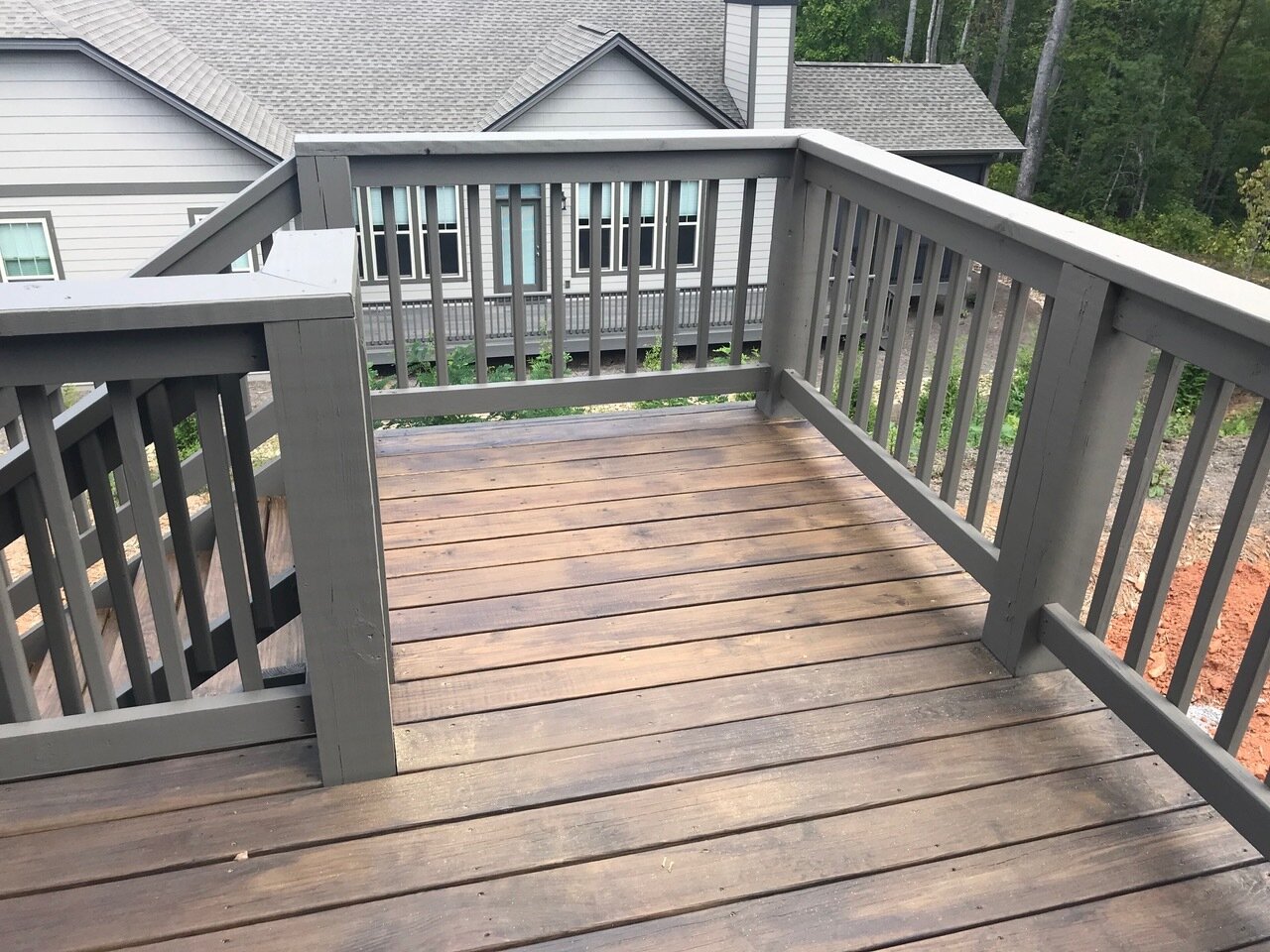A Comprehensive Overview to Different Kinds Of Deck Discoloration Techniques for Ultimate Defense and Looks
In the realm of deck upkeep, the art of tarnishing stands as a crucial action towards both maintaining the integrity of your outside room and improving its aesthetic charm. As we navigate via the elaborate globe of deck discoloration strategies, one starts to value the nuanced strategies that can make all the distinction between a mediocre coating and a remarkable one.
Recognizing Various Kinds Of Spots
Different kinds of spots are commonly made use of in the process of deck discoloration to attain different aesthetic and safety effects. On the other hand, semi-transparent stains use an equilibrium between color improvement and defense, enabling some timber grain to show through.
Additionally, there are also specialized stains such as sealants and toners. Toners add a hint of color to the wood while giving minimal defense, making them ideal for newer decks with less wear. Sealants, on the various other hand, offer security versus dampness and UV rays without adding shade, making them a preferred choice for decks that already flaunt a preferable hue. Comprehending the attributes and benefits of each kind of stain is vital for accomplishing the wanted look and longevity for your deck.
Picking the Right Stain Color
When considering the visual appeals of your deck discoloration project, the selection of stain color plays a critical function in enhancing the safety high qualities of the chosen stain kind (Beautiful Deck). The shade you select can dramatically impact the general appearance of your deck, along with its ability to endure the elements gradually
When picking a discolor shade, it's important to think about the existing color pattern of your home's outside. Balancing the deck tarnish with the general visual of your residential property can produce a visually appealing and cohesive outside room. In addition, the shade of your deck discolor can influence the temperature level of the deck surface; darker colors often tend to take in more warmth, while lighter shades show sunlight and stay cooler.
Moreover, the kind of wood you are discoloring will certainly also influence exactly how the tarnish shade appears. Various timber varieties can engage with the discolor in different ways, possibly altering the last shade. It's advisable to test the discolor on a small, low-profile area of the deck to ensure the color ends up as desired prior to continuing with the whole project.
Preparing Your Deck for Discoloration
To guarantee a successful and resilient deck discoloration task, thorough prep work of the deck surface area is crucial. Begin by cleaning the deck completely to get rid of dust, grime, mold, and any old discolor or finish. Make use of a deck cleaner or a blend of water and detergent along with a tight brush or pressure washer to scrub the surface clean. After cleaning, enable the deck to completely dry entirely prior to proceeding to the following action.
Examine the deck for any harmed or rotten boards that need to be changed. Hammer down any kind of extending nails and sand any type of harsh locations to make certain a smooth surface for staining. Look for any type of loose barriers or steps that might need tightening or repair.
As soon as the deck is tidy, completely dry, and in good repair service, think about applying a visit the site timber brightener to recover the deck's all-natural color and open the wood pores for better discolor penetration. Protect any neighboring plants, furniture, or surfaces with plastic bed linen prior to continuing with the discoloration process. Appropriate preparation is key to accomplishing a professional-looking coating and taking full advantage of the longevity of your deck tarnish.
Using Stain With Different Strategies
For a expert and perfect surface, the approach of using tarnish plays a critical function in enhancing the look and longevity of your deck. There are several techniques you can use to guarantee a reliable application of tarnish.
Cleaning is a typical approach that allows for accuracy and control over the amount of discolor used. It is ideal for elaborate locations and reaching in between deck boards (Water-Based Stains). Rolling is a quicker alternative, covering bigger surface successfully. Nonetheless, back-brushing after rolling is suggested to level the tarnish and function it right into the timber for far better infiltration.
Spraying is one more preferred strategy, using rate and convenience of application, specifically for big deck areas. Whichever technique you pick, guaranteeing appropriate prep work and complying with producer standards will aid accomplish a lovely and resilient tarnish finish on your deck.

Preserving and Re-staining Your Deck
Correct upkeep and prompt re-staining are essential for maintaining the appeal and longevity of your deck. Routine upkeep jobs include sweeping off debris, cleaning with a deck cleaner, and examining for any indicators of wear or damages. Dealing with issues without delay can protect against a lot more significant troubles in the future. When it comes to re-staining your deck, the regularity depends upon various variables such as the sort of stain made use of, the climate in your location, and exactly how much wear and tear your deck experiences. Normally, it is recommended to re-stain your deck every 2-4 years to keep its security and aesthetic appeals.
Before re-staining, ensure the deck is clean, dry, and cost-free of any type of previous discolor residue. Choose a premium tarnish that matches your deck's product and provides the desired level of security.
Final Thought
To conclude, recognizing the various sorts of deck spots, selecting the ideal color, appropriately preparing the deck, applying discolor with various techniques, and maintaining and re-staining the deck are important steps for ultimate defense and visual appeals. By following these steps, you can make certain that find your deck continues to be in leading problem for many years to come.
Additionally, the color of your deck tarnish can affect the temperature of the deck surface area; darker shades have a tendency to visit site absorb more heat, while lighter shades show sunlight and remain cooler.
It's suggested to check the stain on a small, low-profile area of the deck to ensure the shade turns out as desired prior to proceeding with the whole job.
